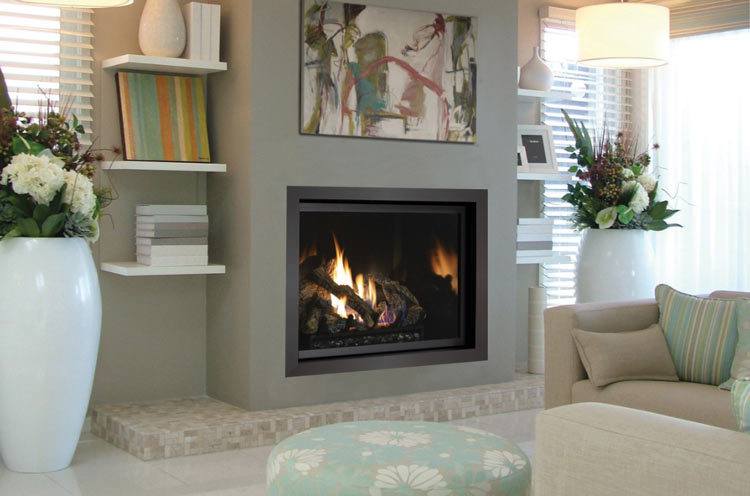Whether you’re replacing a traditional wood-burning fireplace, building a new house, or retrofitting your home- Deciding exactly which fireplace insert is right for your needs can be a challenging task.
Fireplace inserts are primarily divided by the fuel they burn. The most common types are gas, wood and pellet inserts.
Pellet Fireplace Inserts:
Specs:
- Cost averages at about $200 to per ton of pellets.
- An owner needs to feed pellets into the stove. On average, an owner can go about 16 hours between feeding their insert.
- Most pellet inserts and stoves have a fan and controls that are electricity-powered. The average electricity bill is $9 a month.
- Cost-per-BTU:
- 85% efficiency rating is about $18 per million BTU
- 75% efficiency rating is about $20 per million BTU
Advantages:
- Clean and efficient fuel source with a long burn time.
- Renewable biofuel: Pellets are made up of wood that has been ground and pressed into small pellets.
- Pellets are more compact than traditional wood, allowing for easier storage and less space.
- Pellet Inserts require little clean-up due to the efficient way that pellets burn. There is little to no ash to clean up or empty.
- Low particulate emissions compared to traditional wood (but more than gas).
- Smokeless start up and reloading.
Disadvantages:
- More expensive than traditional firewood on average.
- Pellet fireplace inserts require daily maintenance: you will need to fill the pellet reservoir at least once per day.
- Pellet inserts require electricity to run. If you lose power during a storm, you will also lose heat.
- Using pellets as a fuel source puts you at risk of being affected by Spare The Air No Burn Days. When an alert is in effect, you are not allowed to use your fireplace insert.
Wood Fireplace Inserts:
Specs:
- An owner needs to feed wood logs into the stove. Depending on if you use a wood fireplace insert for your primary heat source or not will dictate how often you need to replenish your fuel source daily.
- The cost of wood varies by region. Your cost can depend on whether you have access to your own wood source or if you will need to purchase wood. Contact your local wood suppliers to determine fuel costs.
Advantages:
- Runs independently of electricity- you will not lose heart during a power outage.
- Natural and renewable energy resource. You also have more control over the type of firewood you choose to burn.
- Traditional ambiance, crackling sound, and fire smell.
- One log can burn up to 9 hours.
Disadvantages:
- The most clean up and maintenance of any insert option. Annual maintenance inspections are also recommended.
- You will need to acquire and store firewood. Depending on if you have a private source or need to outsource for firewood.
- Pollution caused by wood smoke is a big concern in the Bay Area. An estimated 38% of fine particulates in the Bay Area are caused by wood smoke. Using wood as a fuel source puts you at risk of being affected by Spare The Air No Burn Days. When an alert is in effect, you are not allowed to use your fireplace insert.
- Limited control over heat output.
Gas Fireplace Inserts:
Specs:
- A gas line will provide the fuel to your gas fireplace insert.
- The cost of running a gas fireplace insert will depend on the following factors:
- Heating efficiency rating of your insert
- Number of hours of use
- Cost of natural gas (One Therm, or thousand cubic feet, equals 100,000 BTU)
Advantages:
- Most convenient fuel to use.
- Cleanest burning of all fuel sources.
- Gas inserts run independent of electricity. Your gas insert will keep hearing during a power outage.
- Starting a fire is as easy as flipping a switch or pushing a button. No log splitting or pellet shoveling.
- Enhanced controls for heat output and flame regulation. You can control the heat with a touch of a button and the thermostat will maintain temperature.
- Very minimal maintenance and clean up. No ash or soot is created with a gas fireplace insert.
- Most efficient heat source and also allows for zoning of heat within your home.
- Direct vent options for exhaust.
- It’s like having your furnace in the room you are heating.
Disadvantages:
- Although the ambiance created by the ceramic logs is very comparable to a traditional wood-burning fireplace, you miss out on the “crackling” and wood smell.
- You will need a gas line to run the gas fireplace insert.
In addition to taking the advantages and disadvantages of each fireplace insert type into account, the best fireplace insert for you will also depend on the size of the space you’re heating. The BTU output of the stove and how easily it can comfortably heat your home will have a big impact on which fireplace insert you choose.
No matter which option you choose, you should absolutely work with a professional installer throughout the entire process. This will guarantee you the safest, most efficient, and best-looking installation possible. The team at Creative Energy offers our services throughout the entire process: From conception, to design, installation, and maintenance. Contact us today to get started.

